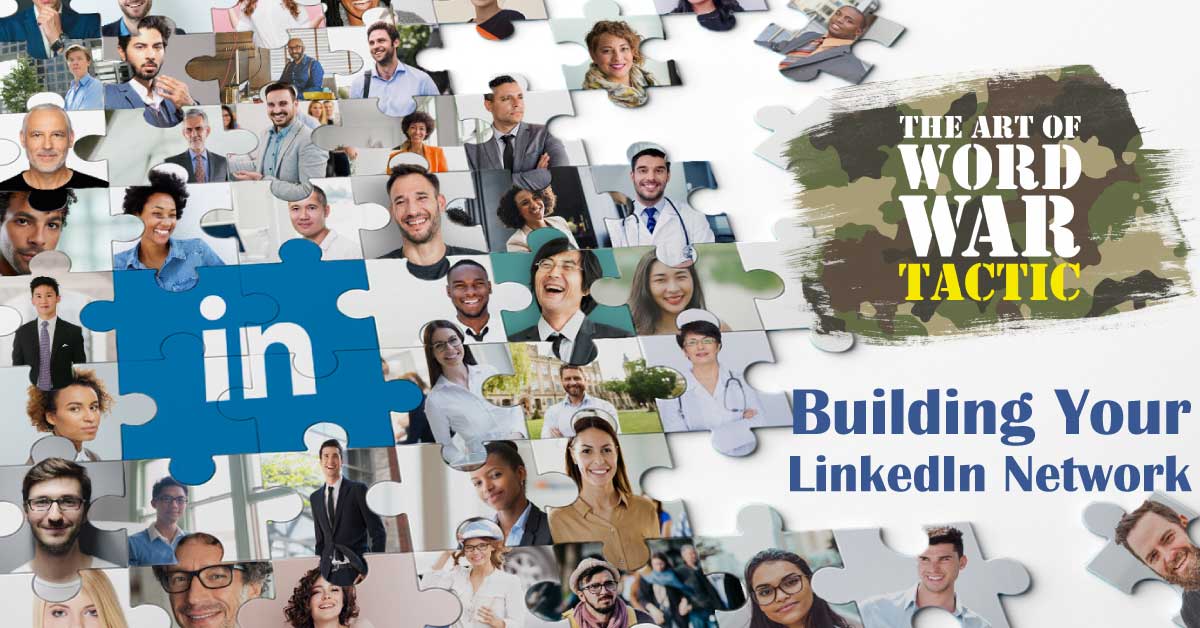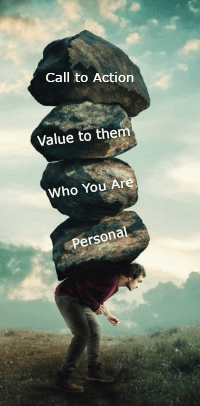It’s not what you know, it’s who you know. While our world is constantly changing, this adage rings as true as ever in Social Media. The volume of your social media voice is created by the quality and quantity of your connections. Without connections within the network, you simply have no voice. Let’s explore the details of how to improve LinkedIn presence for business to business customer-facing staff.
Business to Business Customer Facing
This tactic is very specific and assumes that you are building a professional network because you hold a customer-facing position within the business. Examples of customer-facing roles are sales representatives and executives with active roles in sales. Since LinkedIn is the dominant professional network, we also assume that the business network you seek to build is B2B. LinkedIn certainly has consumers in it but at its core, it is a professional network. To run into this network with a consumer tactic is a marketing disaster looking for a place to happen.
The Connection Request
If there is one thing that separates winners from losers in LinkedIn it is their connection request. A connection request is sent to the person you are saying hello to and limited to 300 characters and spaces. A good connection request has these components:
- It’s Personal
- Explains who you are
- Explains value to them
- Strong “Call to Action”
If you hit all four of these you will have a high “Yes” rate and you will start the relationship with a positive first impression. If you think that writing this is easy, you do not yet understand the challenge. On average, you have 42 words to project your personality, explain who you are, and why a relationship with you is mutually positive. Doing this in 42 words or less is a huge challenge. You will know that you have done a good job with this when your “Yes” rate exceeds 20% from a cold contact. Since we recommend driving this by the title of the potential contact, getting personal is possible and it sets the stage for who you are and how they get value.
Title Search
The foundational tool for building your network is the search and more specifically the title search. Our goal is to connect to a specific level within targeted organizations. Here is an example of a title search:

In this example, we are looking to connect to Sales Executives and Vice President of Sales. These are two very common job titles that are typically utilized with this tactic. There are some challenges to watch out for on this. While this shows a result of 9,411 results you cannot get to all of them. At most, LinkedIn will give you 100 pages with 10 people per page for a total of 1,000. If your search exceeds 1,000, you cannot see the other 8,411 listings. This is only my 2nd level contacts. If I add 3rd level contacts, the number jumps to 68,171 which increases this problem.
So how do we get around this limit?
The same way you eat an elephant: One “byte” at a time. The solution takes time. You have to work the list little by little until you get through the first thousand results. As people accept your connection invitation they move to your 1st level creating an opening in the top 1,000 2nd level. This can get very complicated very quickly so make sure that you keep good records of your requests. LinkedIn will limit your daily requests to 100 so processing the top 1,000 will take 10 days. The key here is a continual effort at a reasonable level.
Other Limits
LinkedIn also has a cap on the total pending connection requests and it was recently increased from 3,000 to 5,000. It is a must to remove stale requests to create new space in your account. Click on your network tab then Manage all on the right side:

Then click the Sent tab

Remove the oldest requests to make room for new ones.

What happens as you work the account is that a certain percentage of people will accept your connection request. This moves them to a 1st level contact. This increases the number of 2nd and 3rd level contacts. If you continually work on your network it will grow but don’t go too fast because you will be flagged as a connection spammer.
It’s about Quality, not Quantity
Businesses have long known that it’s not what you know but who you know and how you know them. In social media, in general, and LinkedIn specifically, creating a connection is equivalent to saying hello in the physical world. If the person says hello back then its an invitation to have a conversation. From conversations come relationships and from relationships come to value. In LinkedIn, this conversation comes from your postings and while that is outside of scope for this article, it is a necessary part of the process.
LinkedIn Tries to Help
If you click on the My Network tab on our account you will get this:

These are the recommended connections from LinkedIn based on your account and honestly, they do a fairly good job. With just one click, the request is sent. How cool is that? Be careful though because with great power comes great risk. This sends a standard “Please join my network” message; a clear sign that you gave no effort toward the relationship. These requests will get rejected at a much higher rate than those sent with a personalized message. I do use this function from time to time but I click through to the profile and use a custom introduction. It shows I care.
Business Versus Personal
This is a debated issue in our world and we do not have the answer for your situation. Our goal is to help you understand the issues. Businesses invest in building networks to communicate with their market but LinkedIn profiles are based on a person. So who owns this is a business asset? If you are creating a new profile, and get a written agreement in advance, there is a possibility that your business can own it. If you hire a person with an existing profile the business claim to ownership is beyond thin. We have not seen this tested yet but it is a conflict that is hard not to see. We are NOT A LEGAL resource but, it stands to reason that if a business invests thousands into building a profile they would like to own it. Our best marketing and business advice is to clearly understand the risk you are taking. Talk to a good business lawyer, not your marketing agency, and get an agreement in advance, not at the end of the employment relationship.
Do, Delegate, or Outsource
Work gets done in one of these three ways and each has its strengths and weaknesses. As it applies to building your connections in LinkedIn, you can do it yourself. This article gives you the basics of how and certainly nothing here is rocket science. If you read this far, we are sure you can do the work. The question is, should you? Most customer-facing staff are professionals and executives and honestly, the process here can be a bit mind-numbing for people of that skill level. You can delegate but that can spread your staff too thin. Another issue is that social media changes a lot so keeping up to date is a challenge for internal staff. The exception to that is a delegation to an internal social media management department. Outsourcing often makes sense but it is not without its challenges. In an outsourcing relationship, make sure they never try to represent the business. In the event of an unusual response, they need to immediately raise it to the profile owner and get out of the loop. Most outsourcing resources will perform this task full time allowing them to keep training up to date while staying within the limit imposed by LinkedIn. Done properly this is one to two hours a week.
Goals
Utilizing any tactic requires goals and a budget. We recommend that you start at a pace of one hour per week. In one hour you should be able to reach out to 100 people and get yes responses. You should get a 20% yes rate but if you do not get these results, something is wrong. Examine your message and your target and make the necessary adjustments. If after 30 days of getting your 20%+ yes response you can ramp this up until you top out at 5 hours a week. At that point, you will start running into the system limits for network building.
Budget
To build a network you need more than the free account on LinkedIn because your search results will be very limited after a few searches. The cost of an annual Premium Business account is $575.88, which translates to $47.99 per month. This brings your out of pocket cost to $0.56 per connection. The labor cost depends on how you value your time. For this discussion, lets say your opportunity cost is $100 per hour. This adds $5 to your per connection cost for a total of $5.56. Compared to most outreach efforts that open permission to communicate with a prospect LinkedIn is a bargain. Opportunity cost is the value you could create in your business if you were focused on something else.
Do, Delegate, or Outsource
This is a function that is often delegated or outsourced because customer-facing individuals have very high opportunity costs. Delegation sounds good and seems to cost less but it’s often difficult to manage and maintain. Few businesses have someone sitting around waiting for work to do. This work often gets dropped for higher priority work and it takes time to keep up to date with changes in the network. Outsourcing is a solution we offer with typical lead costs in the $5.33 range. Call us and we will be glad to quote this for you.
Now that the simple stuff is done
While in the beginning, building your connection network might seem like a daunting task, it is just the first step of a very long journey. As you build out your network, you have to start communicating with everyone and create your professional persona.



